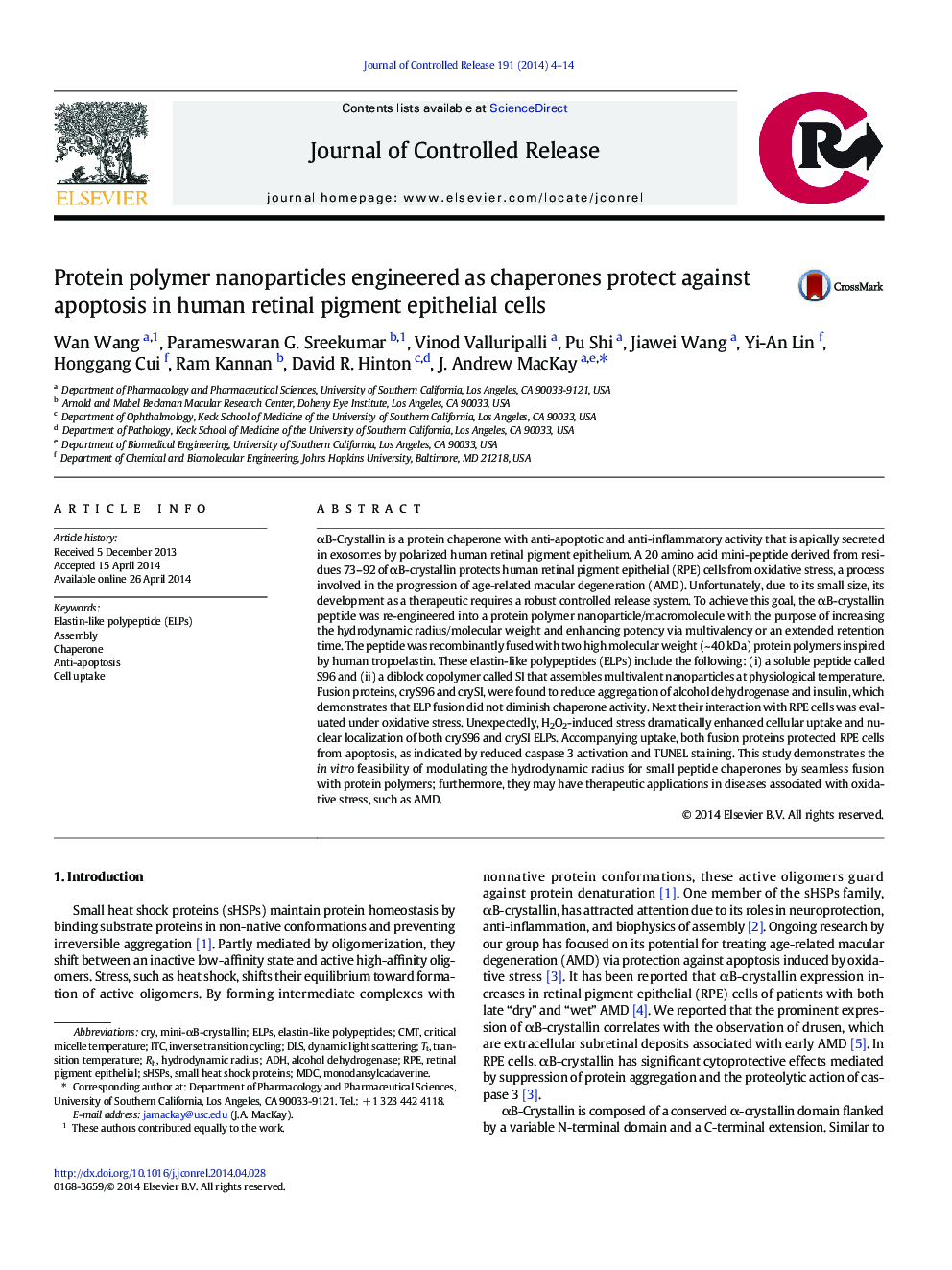| کد مقاله | کد نشریه | سال انتشار | مقاله انگلیسی | نسخه تمام متن |
|---|---|---|---|---|
| 1423858 | 1509058 | 2014 | 11 صفحه PDF | دانلود رایگان |

αB-Crystallin is a protein chaperone with anti-apoptotic and anti-inflammatory activity that is apically secreted in exosomes by polarized human retinal pigment epithelium. A 20 amino acid mini-peptide derived from residues 73–92 of αB-crystallin protects human retinal pigment epithelial (RPE) cells from oxidative stress, a process involved in the progression of age-related macular degeneration (AMD). Unfortunately, due to its small size, its development as a therapeutic requires a robust controlled release system. To achieve this goal, the αB-crystallin peptide was re-engineered into a protein polymer nanoparticle/macromolecule with the purpose of increasing the hydrodynamic radius/molecular weight and enhancing potency via multivalency or an extended retention time. The peptide was recombinantly fused with two high molecular weight (~ 40 kDa) protein polymers inspired by human tropoelastin. These elastin-like polypeptides (ELPs) include the following: (i) a soluble peptide called S96 and (ii) a diblock copolymer called SI that assembles multivalent nanoparticles at physiological temperature. Fusion proteins, cryS96 and crySI, were found to reduce aggregation of alcohol dehydrogenase and insulin, which demonstrates that ELP fusion did not diminish chaperone activity. Next their interaction with RPE cells was evaluated under oxidative stress. Unexpectedly, H2O2-induced stress dramatically enhanced cellular uptake and nuclear localization of both cryS96 and crySI ELPs. Accompanying uptake, both fusion proteins protected RPE cells from apoptosis, as indicated by reduced caspase 3 activation and TUNEL staining. This study demonstrates the in vitro feasibility of modulating the hydrodynamic radius for small peptide chaperones by seamless fusion with protein polymers; furthermore, they may have therapeutic applications in diseases associated with oxidative stress, such as AMD.
Figure optionsDownload high-quality image (240 K)Download as PowerPoint slide
Journal: Journal of Controlled Release - Volume 191, 10 October 2014, Pages 4–14